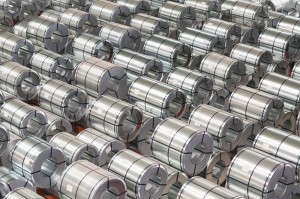Analysis

October 17, 2025
Hot-rolled sources say demand continues to dwindle, prices feel arbitrary
Written by Kristen DiLandro
Hot-rolled coil spot market sources conceded demand for HR sunk deeper this week. They also believe lower prices weren’t likely to stimulate demand. Genuine demand, they stated, will return when the market feels stable again.
This week’s SMU spot market assessment revealed the market average was $800 per short ton, an increase of $5/st compared to last week.
Spot market HR participants say prices are like points on splatter plot line graph with the bulk of buyers around $800/st, depending on what they’ve been able to negotiate.
Market commentary
An Ohio Valley service center associate said a domestic mill told him steel production is now a break-even business. He heard some products have been produced at a loss this year.
“I’m not seeing any movement in the prices. I don’t see much changing in the next four weeks. Then we will be in the holiday season, which means business will drop off until after the 1st of the year. Hopefully, pricing will start to push up in 1st quarter,” he said.
A steel analyst with cross-market visibility said the market won’t thaw until confidence returns. He noted demand continues to slow due to lack of consumer confidence.
He said, “The administrations’ trade policies are creating an air of uncertainty which in turn hampers mid-to-long term planning. Since the tariffs are simply an additional tax at the end of the day, that simply raises their [producers] input costs. This all has a negative impact on consumer confidence which ultimately is the factor that drives fundamental demand and the markets.”
The analyst said buyers enter the spot steel market out of necessity, not because of lower prices. Holding excess inventory this time of year is too risky. With such low demand for HR, the probability of moving excess steel is too risky for service centers to take.
To undam the flow of activity, he explained, it’s essential to restore confidence through clarity.
“As we approach Q1’26, some of the administrations’ policies should gain further clarity which will help the markets, if only marginally,” he said.
A Midwestern-based service center associate said the market wasn’t budging and the standstill was causing frustration.
“It’s all still stagnant with not much forward conversation. This is very frustrating with not much positive activity. I don’t think prices hit bottom. You can bank on it staying slow until 2026,” he said.
On the West Coast, a service center source said HR activity remains slow.
“HRC is not gaining any momentum that I see. We’re probably lucky if it holds on to the level where it is now,” he said.
Looking back to 2024
In the equivalent week of 2024, HR spot prices were assessed at $690 per short ton. Last fall, the market witnessed narrowing prices between domestically produced and imported products in the HR market.
All prices are ex-works, domestic mill, unless otherwise noted.







